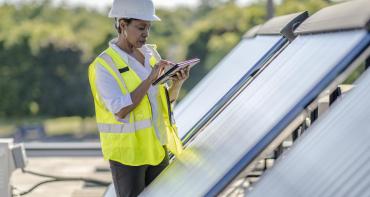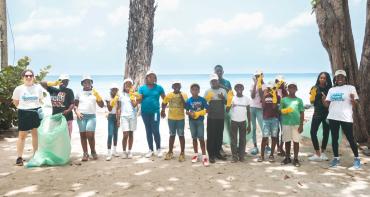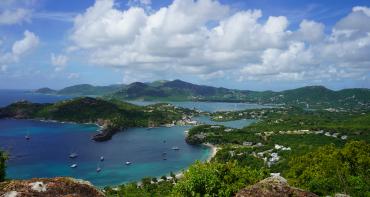The Commonwealth Blue Charter is highlighting case studies from the Commonwealth and beyond, as part of a series to spotlight best practice successes and experiences.

Share your own case study with us
“Mikoko Pamoja is an innovative project that has shown that a local mangrove conservation scheme can have positive sustainable development impacts by way of protecting threatened ecosystems and improving the livelihoods of local community members.” – Eva Schoof, Programme Manager, Plan Vivo
Summary
Dozens of “blue carbon” projects are currently underway around the world. But whether or not these projects live up to their potential as significant carbon sinks depends on both their ability to deliver real carbon reductions over a sustained period of time and, equally important, their capacity to deliver real value to the local communities that own them. This case study provides an overview of an early blue carbon project in Mikoko Pamoja, Kenya, which has achieved both of these goals.
The issue
Coastal ecosystems such as mangroves, seagrasses and saltmarshes are known for their beneficial role as nursery habitats for marine life, and as natural barriers to extreme weather like flooding and storm surge. But they are also important sinks of carbon dioxide (CO2) emissions, presently storing an estimated 42 billion tons of CO2e (Siikamäki et al., 2012).
These ecosystems are also quickly disappearing around the world, as they are converted to other uses such as agriculture, aquaculture and residential and commercial development. Globally, scientists estimate that up to half of all mangroves have been lost in the past 50 years.1 When mangroves are converted, nearly all of the CO2 they store is released into the atmosphere, resulting in significant greenhouse gas (GHG) emissions. One estimate puts annual emissions from the loss of these “blue carbon” ecosystems at 215 million tons of CO2e annually, with the majority of these emissions coming from Southeast Asia, western Africa and Mexico (Siikamäki et al., 2012).
Efforts to slow the rate of global deforestation using carbon markets (i.e. REDD) are now being applied to these marine ecosystems. Projects that conserve coastal ecosystems (instead of converting them to other uses) can generate carbon credits (carbon offsets) for the GHG emissions they prevent, which can be sold in carbon markets or to individuals, thus providing a financial incentive for conservation. With the highest rate of carbon stored per hectare, and the largest global geographic coverage (as compared with seagrasses and salt marshes), mangroves represent the greatest opportunity for blue carbon projects, particularly in Asia and Oceania (Siikamäki et al., 2012).
There are now several dozen blue carbon projects in place around the world. But whether or not these projects live up to their potential as significant carbon sinks depends on both their ability to deliver real carbon reductions over a sustained period of time and, equally important, their capacity to deliver real value to local communities. An early blue carbon project in Mikoko Pamoja, Kenya has achieved both of these objectives.

The response
In 2010, after losing about 20 per cent of their mangrove forests to timber harvesting, residents of Gazi Bay, Kenya partnered with the UK charity Plan Vivo and the Scotland-based Association for Coastal Ecosystem Services (ACES) to launch a mangrove conservation and restoration project, which involves both the prevention of further mangrove deforestation and new reforestation efforts. As a result of the project, mangroves covering 117 ha of land in Gazi Bay are now protected from illegal deforestation by full-time guards. In addition, nearly 500 members of the community participate in the regular planting of new mangroves.
The Mikoko Pamoja project also generates income for the Gazi and Makongeni communities through the sale of carbon credits, which are created from the CO2 emissions avoided by the project. These credits are generated through a Payment for Ecosystem Services (PES) agreement between Plan Vivo and the community. From 2014 to 2018, the project generated 9,880 credits, representing 9,880 tons of CO2 avoided. Payments to the community resulting from the sale of these credits to date have totalled $58,591 (Mwamba et al., 2018).
This funding has made it possible for the community to hire a full-time project manager and two full-time guards to prevent illegal deforestation. Additional income has funded community projects, such as the purchase of books and the installation of clean water pumps at local schools.
Key lessons learnt
Community-led
One of the keys to the success of the Mikoko Pamoja project is the high level of participation, ownership and support from Gazi and Makongeni residents. Plans for the use of the land and the revenues generated were agreed and are implemented in a transparent way, so that participants understand the limits placed on the land, as well as the resulting benefits.
This is not always the case. For example, participants in other blue carbon projects have subsequently expressed dissatisfaction with both their loss of access to the mangrove resources and the resulting payments from the project. “Compared to what we got, they got a lot… I don’t know what this carbon thing is about, but this is our environment and these are our trees. We planted them and we’re going to use them no matter what it costs us,” one participant of a blue carbon project in Senegal said (Wylie et al., 2016).
In addition, the Mikoko Pamoja project also took the time to understand and address some of the negative impacts the project could have on the local community. For example, project partners planted pine trees outside of the mangrove project site to provide the community with an alternative source of building materials. Unless blue carbon projects take these additional steps to ensure that the communities’ needs are met, they may be unable to sustain the project and to prevent project “leakage” (i.e. the movement of deforestation activity from one location to another).

“The Mikoko Pamoja project’s success likely stems from several key aspects. First and foremost, the local community has actively supported and participated in the project,” said Ariana E. Sutton-Grier, Visiting Associate Research Professor at the University of Maryland.
Small-scale
The relatively small-scale of the Mikoko Pamoja project (117 ha) has prevented it from accessing global compliance carbon markets, such as United Nations Framework Convention on Climate Change mechanisms. This has led to smaller markets for its carbon credits. But its small size has also enabled the project to stay relatively simple, avoiding the extra costs and administrative complexity of complying with complex global mechanisms. This was also the case for a smaller blue carbon project in Vietnam (Wylie et al., 2016), and may be the most viable route for smaller projects.
Challenges
The Mikoko Pamoja project does not account for the carbon stored within the protected land’s soil, which is likely even larger than what is stored in the mangroves (Pendleton et al., 2012). Not accounting for this soil carbon prevents the project from achieving its full financial potential (Wylie et al., 2016).However, measuring soil carbon requires building capacity and technical expertise that would likely add costs and complexity. Recent blue carbon projects in the Sundarbans in India and Bangladesh include soil carbon in their carbon accounting methods and may provide useful lessons for future projects (ibid.).
Sources and further reading
- Bird, W. (2016) ‘Are “Blue Carbon” Projects a Win for the Climate and the People?’ Yale Environment 360, 3 November. https://e360.yale.edu/
- Mwamba, M., Wanjiru, A., Huxham, M., Shilland, R. and Ruzowitsky, L. (2018) ‘2017-2018 Plan Vivo Annual Report, Mikoko Pamoja’. Submitted by the Mikoko Pamoja Community Organization.
- Pendleton, L., Donato, D., Murray, B. et al. (2012) ‘Estimating Global “Blue Carbon” Emissions from Conversion and Degradation of Vegetated Coastal Ecosystems’. PLOS One, https://doi.org/10.1371/journal.pone.0043542
- Plan Vivo: Mikoko Pamoja, Kenya Project: https://www.planvivo.org
- Siikamäki, J., Sanchirico, J.N., Jardine, S., McLaughlin, D. and Morris, D.F. (2012) Global Options for Reducing Emissions from the Degradation and Development of Coastal Ecosystems. Washington, DC: Resources for the Future.
- Wylie, L., Sutton-Grier, A.E. and Moore, A. (2016) ‘Keys to Successful Blue Carbon Projects: Lessons Learned from Global Case Studies’. Marine Policy 65: 76-84
Download this case study (PDF)
View all Case Studies
Media contact
- Josephine Latu-Sanft Senior Communications Officer, Communications Division, Commonwealth Secretariat
- +44 20 7747 6476 | E-mail



